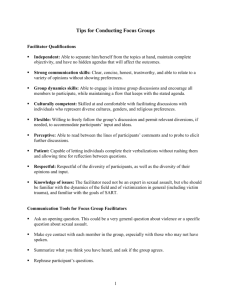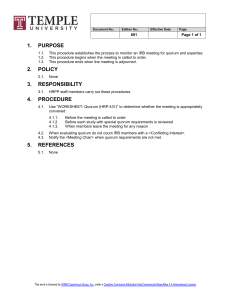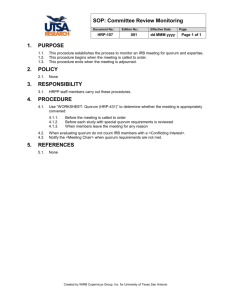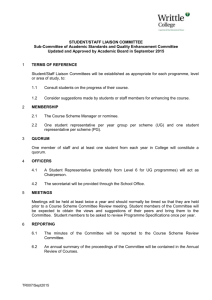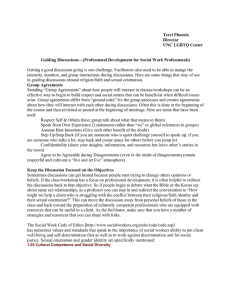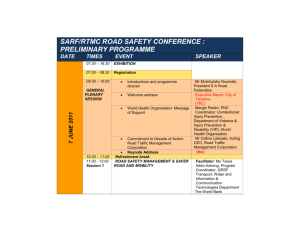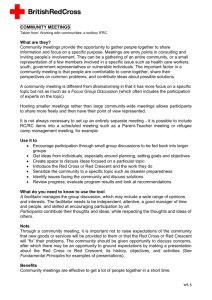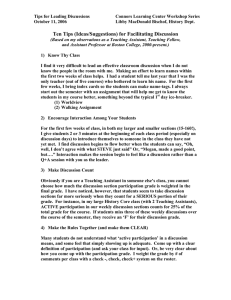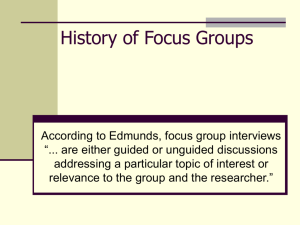Appendix 7 – Tips for effective meetings
advertisement
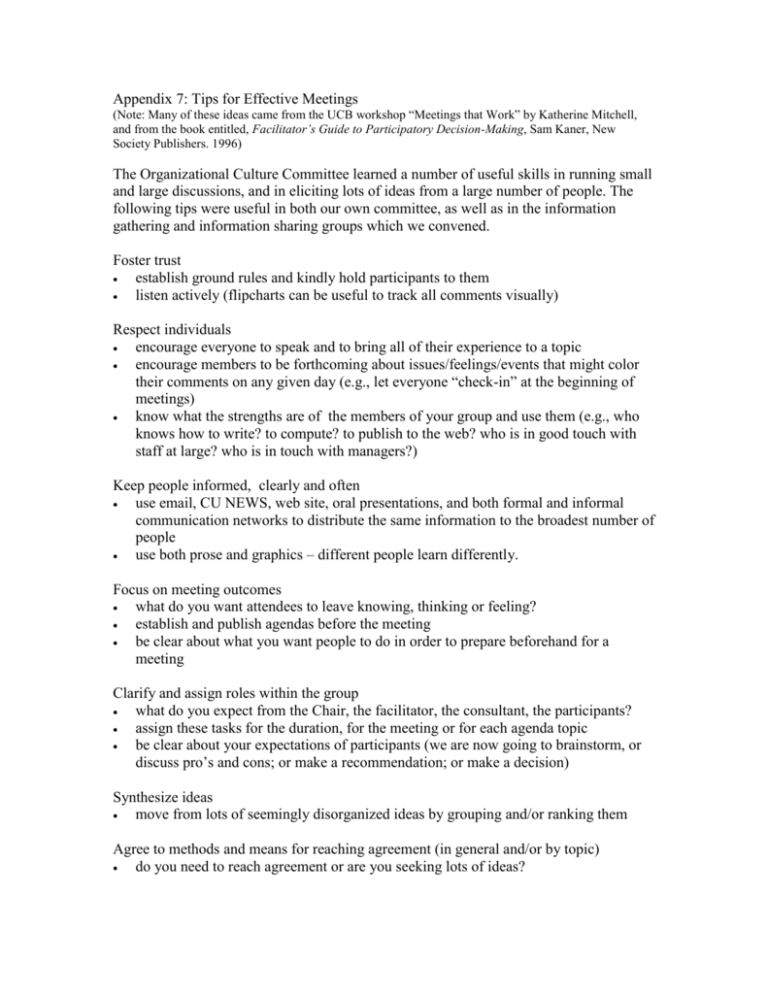
Appendix 7: Tips for Effective Meetings (Note: Many of these ideas came from the UCB workshop “Meetings that Work” by Katherine Mitchell, and from the book entitled, Facilitator’s Guide to Participatory Decision-Making, Sam Kaner, New Society Publishers. 1996) The Organizational Culture Committee learned a number of useful skills in running small and large discussions, and in eliciting lots of ideas from a large number of people. The following tips were useful in both our own committee, as well as in the information gathering and information sharing groups which we convened. Foster trust establish ground rules and kindly hold participants to them listen actively (flipcharts can be useful to track all comments visually) Respect individuals encourage everyone to speak and to bring all of their experience to a topic encourage members to be forthcoming about issues/feelings/events that might color their comments on any given day (e.g., let everyone “check-in” at the beginning of meetings) know what the strengths are of the members of your group and use them (e.g., who knows how to write? to compute? to publish to the web? who is in good touch with staff at large? who is in touch with managers?) Keep people informed, clearly and often use email, CU NEWS, web site, oral presentations, and both formal and informal communication networks to distribute the same information to the broadest number of people use both prose and graphics – different people learn differently. Focus on meeting outcomes what do you want attendees to leave knowing, thinking or feeling? establish and publish agendas before the meeting be clear about what you want people to do in order to prepare beforehand for a meeting Clarify and assign roles within the group what do you expect from the Chair, the facilitator, the consultant, the participants? assign these tasks for the duration, for the meeting or for each agenda topic be clear about your expectations of participants (we are now going to brainstorm, or discuss pro’s and cons; or make a recommendation; or make a decision) Synthesize ideas move from lots of seemingly disorganized ideas by grouping and/or ranking them Agree to methods and means for reaching agreement (in general and/or by topic) do you need to reach agreement or are you seeking lots of ideas? does a member saying “I agree” mean they agree 100%? 70%? with the content but not the wording? do you seek the majority opinion, complete consensus? do you need a quorum, and if so, what constitutes a quorum for your group? Engage your audience/participants go over the salient points of a topic, rather than assuming that everyone knows the territory create some time during a meeting so that participants can think through an issue rather than having to speak “off the top of their heads” when seeking input, devise activities that will get the most ideas from the most people in the amount of time available encourage meaningful discussion by asking thoughtful and pointed questions to foster dialog, consider small “break-out” discussions in the midst of large group meetings
